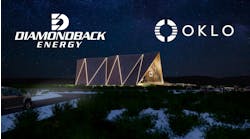Clean Energy Trends 2014 Report
Cities and net-zero buildings are helping drive the growth in energy efficiency, says Clean Edge in its annual “Clean Energy Trends” report.
The report analyzes the industry’s growth by sector in 2013, and includes a global market overview and statistics on investment, as well as corporate and project finance deals.
“While many overarching energy policies are made at the federal level in the U.S., some cities and regional utilities have been taking a more active role in updating their energy infrastructures, especially in the aftermath of devastating storms like Hurricane Katrina in 2005 and Superstorm Sandy in 2012,” says a report summary. They’re also working to curb carbon emissions that are associated with changing weather patterns that have yielded intense storms, the report says.
Seattle, for example, is a leader in its efforts to curb carbon emissions.
“Seattle has taken its longtime climate leadership a step further, announcing a plan for the entire city to reach net zero emissions by 2050, focusing on road transportation, energy use in buildings, and waste,” says a summary. The city plans to use congestion pricing to fund some of its initiatives.
Seattle ranked ninth among U.S. metro areas in Clean Edge’s 2013 Clean Tech Leadership Index, placing No. 5 in the green buildings and advanced transportation categories.
Meanwhile, more than 400 German municipalities have committed to reduce carbon dioxide emissions.For example, Berlin’s Energy Saving Partnership has invested more than 60 million euros (about $82 million) in energy efficiency and building retrofits. That effort led to a 26 percent drop in building energy consumption, reducing CO2 emissions by nearly 600,000 tons from 1996 to 2012, says a summary of the report.
The addition of high-profile net zero buildings has also contributed to a boost in energy efficiency, says the report.
“Within the past two years, the opening of several high-profile buildings has raised awareness and helped prove the net zero energy concept, even at relatively large scale,” says a report summary.
In addition to the increased numbers of net zero buildings, the report saw a boost in “clean web” companies focused on energy efficiency. They include WegoWise, whose benchmarking platform compares a building’s water, electricity, and gas usage to data it has collected on 10,000 structures. Also noted was HonestBuildings, a free online network connecting players in the real estate business, which now offers real-time, online energy monitoring for buildings. And Noesis Energy provides a similar online market-place for building efficiency vendors seeking new projects.
Another energy savings generator is vertical farming, which yields four to ten times as much as traditional farming methods in terms of pounds of crops – using less water and energy per square meter, the summary says.
The report included two energy efficiency companies in its list of the top 10 clean tech venture capital deals of 2013–the $80 million Nest deal and the $65 million Blu Homes deal.
Do you have ideas about other growth areas in energy efficiency? Be sure to join our discussion at Energy Efficiency Markets LinkedIn Group








